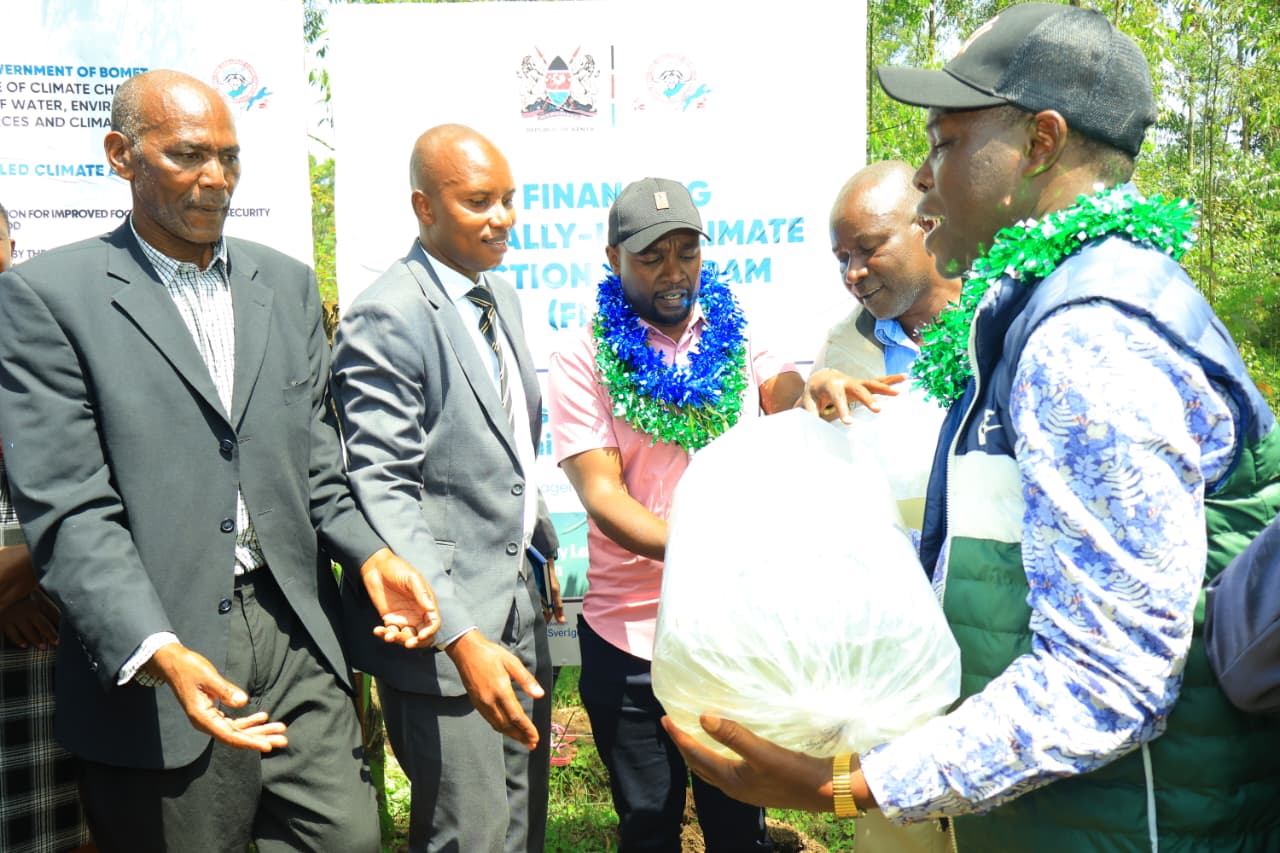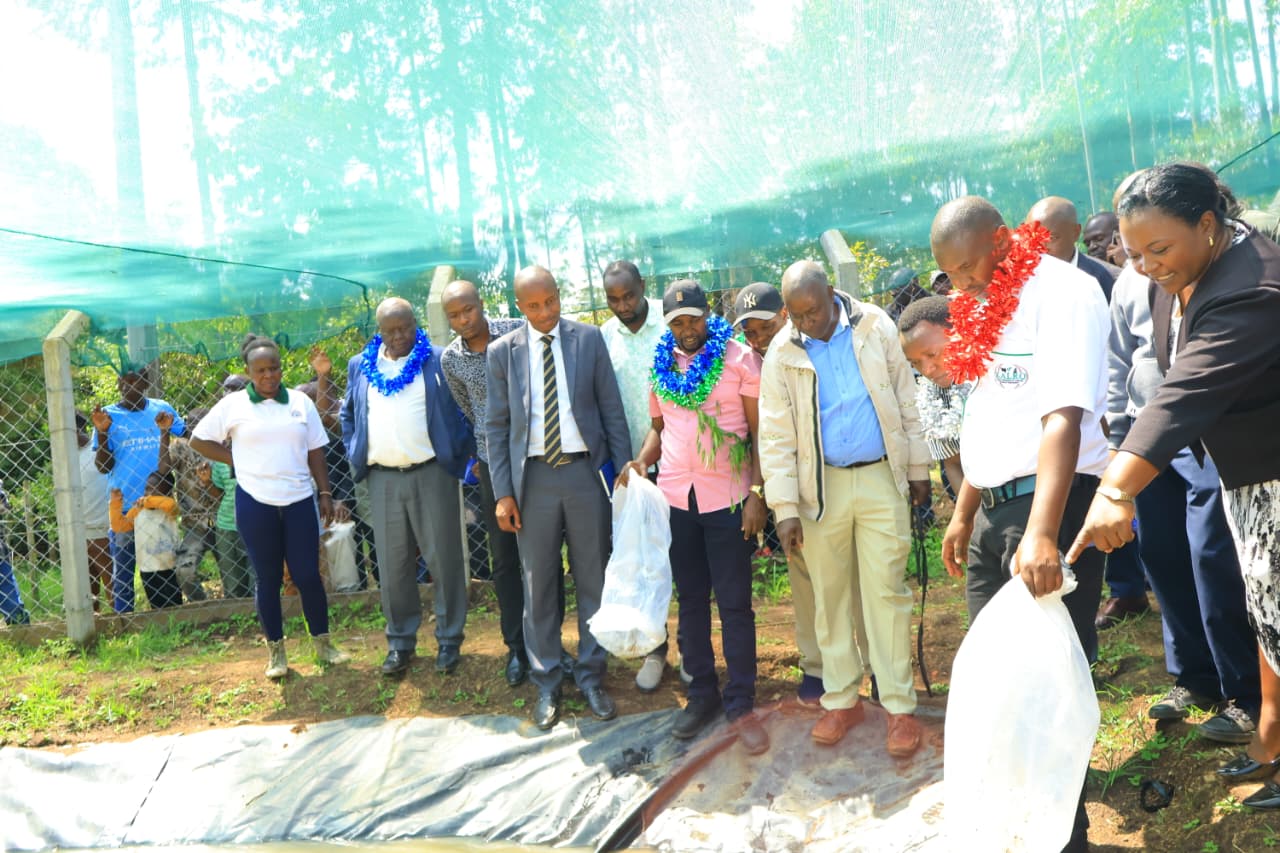Tilapia project transforms livelihoods as farmers swap ploughs for ponds.

Bomet Governor Prof Hillary Barchok flags off a fish stocking program at Kaplong recently. The County has rolled out a program that will see 25 fish ponds stocked with 25,000 fingerlings. Photo/Kimagata Marindany
By Kiptoo Kennedy
Published on August 14, 2025
For generations, the Kalenjin community of Bomet County has been known for maize, tea, and dairy — not for casting nets or stocking ponds. But that narrative is changing. A quiet revolution in agriculture is taking root, and it’s swimming in a new direction: fish farming.
At the heart of this transformation is a partnership between the County Government of Bomet and the Kenya Agricultural and Livestock Research Organization (KALRO). Through the World Bank–funded Financing Locally-Led Climate Action (FLLoCA) program, 25 Community-Based Organizations (CBOs) in the county are now venturing into climate-smart aquaculture.
In Sotik Sub-County, the Emaus CBO is among the first to take the plunge. Members here recently received training and a consignment of 1,000 premium YY tilapia fingerlings — an all-male variety known for fast growth and high yields.

Bomet Governor leads teh stocking of a fish pond at Kaplong Village in Chemagel Ward. Photo/Kimagata Maridany
“We have received training and a thousand premium tilapia fingerlings from this partnership,” said member John Langat, his excitement clear as he oversaw the stocking of a newly lined pond. “This will give us a healthy food source for our community and improve our livelihoods through income generation.”
The program’s reach is wide. In total, 12,000 YY tilapia fingerlings have been supplied to farmers in Bomet — part of a targeted investment of KSh 18 million to boost fish production across all 25 wards. The county already boasts more than 1,400 fish ponds, and local leaders believe the sector is just getting started.
Youth groups, often in the headlines for political protests, have also found purpose in the project. Caleb Langat, a youth representative, credits the initiative with not just creating jobs but changing mindsets.
“We were employed during the project’s first phase and learned valuable skills,” he said. “We’re going to get more nutrients from the fish and be energetic — not for ‘mandamanos’ but for work.”
Governor Prof. Hillary Barchok, who personally joined Emmaus CBO for their pond stocking, sees fish farming as a strategic economic lifeline.

Kalro Olchororo branch is taksed with the supply of fingerlingers for the wold bank funded program which will see 25 groups supported to set up ponds. Photo/Kimagata Marindany
“My administration will keep collaborating with KALRO to establish a state-of-the-art fish hatchery in Bomet,” he said. “Our objective is to make Bomet one of Kenya’s top fish-producing counties. Small interventions like these can economically empower our farmers.”
KALRO’s Mathai Ndung’u confirmed the agency’s commitment to sustaining the momentum, promising continued supply of fingerlings and market support.
For Bomet, the shift from dry-land farming to aquaculture is more than an agricultural experiment — it’s a cultural shift. Ponds once considered alien to the highland landscape are now filling up with shimmering schools of tilapia, promising not just food on the table but a new stream of income.
And for farmers like Langat, the ripple effect has just begun.

One of the fish ponds owned by Emaus CBo from Sotik that was recently stocked with fish. Photo/Kimagata Marindany
Comments Below